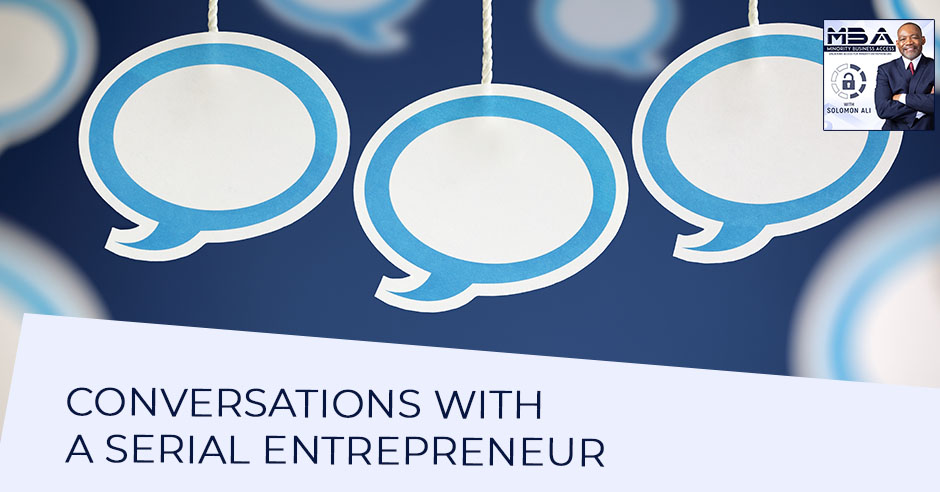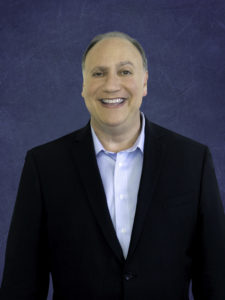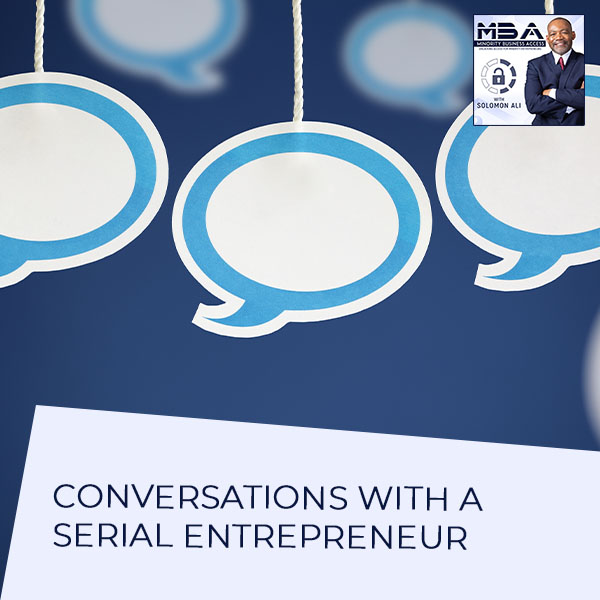
Feeling unsure of how to make success an obsession? Then this episode of Minority Business Access is for you. Host, Solomon RC Ali sits down with Alec Stern, co-founder of online marketing company Constant Contact and “serial entrepreneur,” to discuss the humble beginning that led him and his team to a billion-dollar acquisition. While chronicling his rise to entrepreneurial attainment, Stern also displays his prowess in marketing to your target audience and making your vision plain and clear in order to obtain funding from investors. Yes, it is true that good things come to those who wait, yet thriving businesses are built by those who stalk success at all costs. Time to get on the prowl.
—
Watch the episode here
Listen to the podcast here
Conversations With A Serial Entrepreneur
Alec, I’m glad to have you here on the show. I am so excited to be here with you and find out about you and your company. I won’t do justice in introducing you. Would you please introduce yourself to my audience?
Thanks for having me. I like to say I’m a serial entrepreneur who likes cereal. I’m a cofounder. I had been on the founding team of eight companies. The most notable one that people recognize is Constant Contact, a suite of small business tools for digital marketing.
Can you tell us about that in the beginning stages?
When we started Constant Contact, there were three of us in an attic. There were two technical people and myself in the original team and Cofounders. At the time when we started the company, there were the larger big-box competitors to small businesses where they had either an agency, a suite of marketing tools or staff. They were able to then get out in front of and touch with their customers and prospects with email marketing and other tools. We wanted to level the playing field for small businesses walking down Main Street in any city around the world. How could we level the playing field for them and give them an easy-to-use set of tools where they just had to worry about what they want to say, and when do they want to say it? Not have to worry about the technical aspects of the stuff that was required with the enterprise tools.
When growing a small business from your garage or from someone’s attic, what was that like? How did you guys come up with the vision? Tell us about the growing pains of scaling it.
Initially, we set that premise for leveling the playing field and providing an easy self-service tool for small businesses because they didn’t have staff and may not be technical but they knew the messaging that they want to send. We had to live into that promise to make it easy and simple. In order for us to figure out what that needed to be, I’ll tell anyone, “You’ve got to get out to your target market and ask a lot of questions.” The first question is, “What in your businesses are you challenged with? What are you looking for? What are some of the objectives and goals? What’s the vision of that small business?” They would say like, “I would love to stay top of mind with my customers. I would love to drive them back in. I want more revenue. I want them to tell others and have them come in.”
Once we learned and identified that, I like to call it the bicycle wheel syndrome. When you’re starting a business, every spoke is another idea of how you’re going to help your target market. We had to figure what’s the one spoke we’re going to start with. That was email marketing. When we started, there were more things we didn’t have than we did. We didn’t have a finished product and business plan. We had a PowerPoint. We didn’t have customers, success stories and revenue. There were a lot of things we didn’t have. As I understand, you need those. We didn’t have those initially. Once we learned that we could satisfy their goals and objectives with what we were trying to do, when we told them that they got wide-eyed. Now, we had to live into creating that.
Capital-wise, what type of capital did you have to infuse in the business and startup stage?
When we started, SaaS did not exist. It used to be called ASP. It was ASP, SaaS and now cloud, Application Software Provider. We were one of the first two to come out with a SaaS offering. We were on the IBM platform. Initially, we had to put our software on a CD and plug it into someone’s computer. There were a few things that had to happen for us to get the flywheel going. One was to create a product that someone would want to pay money for. We were renting it. It started at $15 a month. It was inexpensive. For a small business, if they’re paying for something, they want to see the value once we satisfied that and got the flywheel going. We didn’t take salaries. We were leaning into this and committed to doing it without getting paid.
You give up more when you’re getting money if your valuation is lower. It’s in your hands to create value.
How long did you go without pay?
At least a couple of years.
Did you work somewhere else?
No. I personally have a couple of exits prior, an acquisition. In another company, I was in the early team, the first twenty people when we went public. I did have some disposable income. At that time, I had several mortgages. I had all kinds of stuff that I had a lot of money going out and nothing coming in. She was like, “That’s a problem that most of us face in times in life.” There was a lot of pressure on but it also motivated us to, “We got to move quickly here as best we can.”
In one of my early days, we had to go without pay for years. Going without pay, everyone will say, “How could you go without pay?” I said, “I had to.” I would work little odd jobs so I can make ends meet. It was difficult. Any money I got, I put it in the business. Did you guys do that as well?
Initially, we were all committed to this. We were scrappy. We had several interns and anyone that was wanting to learn. We had an incredible initial team. As that evolved and started to grow, it was an exciting thing for people but there wasn’t going to be pay involved initially. We had to figure out some of those things. To answer your question, it was roughly about the two-year mark when we took our first round of venture funding. That was a $2.4 million round. We took in additional funding over time, leading up to going public.
What was that process like?

Serial Entrepreneur: The first question is, “What in your businesses are you challenged with? What are you looking for? What are some of the objectives and goals? What’s the vision of that small business?”
It was a process whether you’re going to get funding or a bank loan or you’re looking for someone to get involved strategically, like an advisor. There are some things you have to have in place. You may not have a full-blown business plan but you might have an executive summary, a shorter version of that with all of the projections of financials, what you would see in the business and how it would evolve. You would be losing money without any revenue. You infuse in money that you might take from a variety of ways. It could be debt in a loan or giving up equity for someone to finance the business. You have to have that business plan and know what’s your 3 to 5-year vision of where this is going to go. You take that and put it into a PowerPoint where you’re going to have 10 or 12 slides and some other additional ones. When they ask questions, the answer needs to be, “I have a slide for that.”
It is important to pay attention to what Alec is sharing with you because he’s someone that has done it and been there already. He’s giving you some great tips on what you need to do.
This is not the first time this has been done. There is somewhat of a repeatable process. We tend to want to shortcut it, skip things or we’re not ready to maybe put something together but understanding whoever is on the other side of this is going to have an expectation of having certain things in place. They’re going to want to see that you have a handle of what the business is, where you see it going and how you’re going to get there. There’s that vision but what are you going to do now? What are you going to do in six months and a year? If you’re going to go out and get money, they’re going to say, “What are you going to do with it?”
You have to tell them you use the proceeds for, “We’re going to hire some additional people for developing the application or marketing to go and promote it.” You’re going to have to be clear for how you’re going to spend that money because they’re going to say, “If I gave you the money, what are you going to do with it? What are you going to achieve with that money?” Everyone wants to know that. Those basic things are the key and foundation for opening up the conversation to get money whether it’s a bank loan. The SBA and others offer great bank loans if not giving up equity for funding.
I know a lot of entrepreneurs out there think they have the greatest business since sliced bread. When they go get money, they don’t want to give up anything. I’m like, “That’s a pipe dream because you’re going to have to give up something or collateralize it. You got to give the investors something to look for.” Were you willing to give up something? Was it a process that you have to mull over? Tell us about that.
No matter what it is, you’re giving something up. It’s a give and get. If it’s a straight bank loan who some are small business-friendly and centric and others maybe not, they may collateralize it against your home like, “You don’t have enough here. We don’t see the asset yet. You might not have intellectual property.” You might not have things that they would say, “There’s value in that.” You have to think through that and understand that you’re going to give something up. In every case, it will lead to giving up some ownership in the company. The burning question is the valuation and what’s the company worth. When you don’t have customers and a lot of things are not being checked as needed, others could argue it’s not worth a lot.
You give up more when you’re getting money if your valuation is lower. It’s in your hands to create value. Get out of stealth mode and get your product out there. Get early customers. Don’t get family, friends or people you did business with before. Go get strangers because they’ll give you brutal and honest feedback. If they have success with it then they can become a reference or what you would want as part of the value like, “We’re showing you that our target market wants what we have.” It’s a question about scale, “How do you get more of them?” You have to answer the question, “How are you going to show the growth path?” In the case of working with small businesses, it’s very difficult to go door-to-door. We were told, “You’re not going to succeed unless you have a huge army of salespeople.” We had to figure out how we’re going to go to market.
In the case of working with small businesses, there’s a whole channel out there of trusted resources, services and others that small businesses rely on for other aspects of getting help, like their point of sale system. If you could work with those people who will endorse, recommend, suggest or refer then you can get to your target market through that channel, which has a lower cost of acquisition, bringing you customers and value to get your valuation to go up. When you trade-off for taking in funds of one way or another, you give up less of the ownership. It’s an equation. For example, if your company is worth $1 million in valuation and you’re taking in $100,000, you’re going to roughly give 10% of the business up. You have to expect that that’s what you’re going to do.
I know you do a lot of other things like help companies to grow strategically and sit on their board and advisory. What are some of the most important things that you feel that an entrepreneur looking to scale a business as you have done in the past and then take it up with that process?
There are a lot of places we can go because it’s a journey. It’s a marathon, not a sprint.
I’m not unpacking that there are a lot of places we can go because it’s a journey. It’s a marathon. It’s not a sprint. It could be two marathons. Imagine if you weren’t a runner, didn’t have sneakers and had to run a marathon. That’s taxing. We’re all doing this for a reason. Whether it’s a non-profit, creating a new, small business to provide for your family or a business that would potentially scale and have an exit to get acquired or go public, we’re all doing it because we’re passionate about something. We were passionate about small businesses and helping Main Street small businesses of all types. You’re on the journey. The things we talked about are getting you ready for the marathon.
It’s a long journey. I’ve been on the journey for many years. We did extremely well. Not as well as some and not as bad as some. Now, I find myself doing similar to what you’re doing on a smaller scale, working with minority companies saying, “If I could do this, you could do this as well.” It’s not that difficult. However, it’s more than a notion. What I mean by that is the journey. It’s like running that marathon. When you start, you’re loosening up. By the time you get to mile 3 to 5, you’re feeling good but you get to mile 16 and 17 your body is like, “What the heck am I doing?”
Your support system around you is saying, “What the heck are you doing? You don’t run. What are you doing running a marathon?”
I have found that a lot of entrepreneurs especially minority entrepreneurs have an unrealistic viewpoint of their businesses and where they want to go with them. What I mean by that is that they overvalue their business and underestimate the importance of the capital that’s needed and what people need for return. When I invest, I like to make sure that it’s enough collateral there or we have enough growth to share and they grow for the business. Can you speak to that from that point?
People always ask me like, “Who are the people that you look up to and that have influenced you?” My answer is, “All the small businesses, startups and entrepreneurs that I have a chance to work with, either through providing products and services to or advising and mentoring.” The one group that I’m most passionate about is when we talk about urban innovation and inner-city innovation. There are a lot of accelerators and programs that support small businesses. You’re not alone in a lot of places around the country. There are great organizations that can provide mentorship and support.
In the journey in this marathon, the difference between a real marathon and this, in this, you can get a lot of support around you. People can carry you for a little while, run with you, cheer you on, motivate you, slap you around and tell you, “You’re going too slow.” It’s important to find the smart factor, smart advisors, mentors and people that can help you figure out your projections and strategy for raising funds, alternatives and what’s the difference between those. It’s important to bring others into the mix. There’s a lot of people who have been there and done that who can guide and mentor you. It’s not always giving you the answer, “Don’t do that. Do this.” It’s showing you the alternatives and then you have to make a decision around what to do.
A lot of times, I’ll see an entrepreneur who has horse blinders on. They know their idea, where they’re going with it and the solution that they’re going to provide. They don’t necessarily want to get feedback like, “I know what my customer needs.” They won’t get customer feedback, perspective customer feedback, strategic advisor feedback or experts in their area like people who are strong in finance and accounting. You have to wrap those people around you and get them to assist you to allow you to propel ahead and have success.
It’s interesting that you said that because I know when I was scaling my business, one of the things that I learned, “If you grow too fast, the bank will say no.” They don’t want to deal with you because they think, “Let’s see what you do for a couple more years.” I found that to be interesting because I went naively thinking, “We grew from zero to a few million. They should be excited. I should be able to get all this money,” and it didn’t happen.

Serial Entrepreneur: There are a lot of accelerators and programs that support small businesses. There are great organizations that can provide mentorship and support.
The perception there is you’re on your way. If you did $0 to $2 million, you could probably go to $4 million. A lot of the people in the support network around bank financing, potentially taking loans from investors or giving up equity in exchange for money, all of them are trying to buy time. A lot of them won’t say no but they’ll wait to see, “What happens next?” If you have that kind of success, you’re starting to see something or maybe you’re so early you don’t have revenue yet, they’re going to say, “This is a great idea. You’re onto something. Keep us posted. Let’s see how we do.” All they’re trying to do is check some additional milestones to feel more comfortable about involvement and investment.
It’s not until, for example, we’re going to get potentially a bank loan where one bank says, “We love the idea. We want to give you the money.” That other bank sitting on the sidelines, cheering you on for your marathon, will be, “We’re interested.” Sometimes it takes two for someone to potentially step up. They’re maybe waiting on the sidelines. What you have to do is, as best you can, create a sense of urgency, show that you know your path to success for the offering you’re bringing your customers, a product, service or whatever it may be. You know and can present and articulate how you’re going to scale. Now, it becomes a money issue because you’re not going to have enough revenue to scale. You’re taking external funds in to accelerate. If you can paint that picture and let them see, “We should be in on this because our money will help in that scale trajectory,” then they’re going to step forward and give you the money.
When you say that, I recall when I went to a VC and a private equity company. They were like, “Well.” They wanted a lot. They wanted over 40% of the company for a small dollar amount. I was like, “I’m not sure if I want to do that.” They kept talking to me and then brought up all the different minefields that I’m going to have to navigate, things that I had not even thought about and didn’t know to think about. They start sharing with me and then reality hit for me, “I knew the core business but maybe I didn’t know enough of the other critical pieces that were necessary.”
The or in that is the debate and conversation around valuation. That million-dollar example I gave you and if you took in $100,000 then that’s roughly a 10% trade-off and giving them potential equity. If they’re saying to you, “We want 40%,” that Math doesn’t work. What has to give? It’s the valuation. Your valuation comes down to $300,000. You think it’s worth $1 million. They think $300,000 and they’re going to take whatever the percentage is that’s higher than 10%. The only way you can get the valuation back up is to show milestones and things that you’ve achieved. It’s not always revenue-driven.
“We have a finished product, the right team, a large problem that we’re solving and the right solution. This is what makes us unique. The competitors, while they’re out there, are not focused on these things that we are. It’s what sets us apart for success. We have some customers 2, 3, 4 and success stories.” Each of those things is increasing the valuation because you’re checking boxes to give someone that wants to invest comfort in investing and also in that valuation.
That’s what we ended up doing. We started looking at the industry. We started showing and identifying exactly how we would gain market share. Not necessarily to take market share away from others but that’s what we were doing, was going to gain more market share by taking market share away because we knew we had solved a problem and identified it. That’s when things started turning around. It was hard freaking work.
It’s stressful and very hard. There are a lot of peaks and valleys, up and down. That happens in the course of a day, not over time.
I remember my parents and wife at that time. Everyone was telling me, “Go get a job. Get two jobs. We have bills to pay.” I was working a part-time job and doing the business. Every dollar that came in, I was pumping it in the business. They were like, “Are you crazy?” I was like, “No, this is going to work.” No one believed in it but me. I found out in the very beginning I had some believers. Along the way, they all fell away to the side. In the end, it was just me. As soon as I started getting money in, all of a sudden I had some more believers again.
It’s funny who comes back around when you start having that success. If you were to take that all the way through to having an acquisition or an IPO, it’s always funny when they come back and like, “That’s the one that got away from us.” “You kicked us out of your office and told us there’s no way we’re going to succeed. You don’t remember that part of the story.”
Everyone has to leave egos and your past experience issues behind.
Could you tell us about the IPO when you guys did that?
I’m jumping years from inception is when we went public. In the process leading up to that, there were a lot of things that need to be in place and we were fortunate. Constant Contact, when we sold the company, there were 1,500 employees. We had a rockstar management team that came in.
Before you jump to the IPO, tell us about the growing pains because I know there are some critical things in growing pains that most entrepreneurs don’t know when you take a business from wearing all the hats. You know marketing and finance. You know it all to bring those experts in and place them around you to grow that business.
We were fortunate, even in the earlier days, to have the initial core management team that we’re rounding out and needed. We had great people and advisors there. At that point, we had a great board that was very supportive. There were a lot of things that were in place. One of the hard things is when you’re starting. You’re setting the culture. What do you want that culture to be? We spent a lot of time figuring out the things we’re going to focus on. Number one was to delight the customer. If you create a wow moment for your customer, they’re going to stay with you and tell others.
The culture was key. When you scale, one of the most challenging things with scaling is we would hire somebody in. Within six weeks, they were like the manager of another group. With that scale and growth, you’re bringing in so many people. We had to make sure that culture carries down because some people weren’t there very long even though in the interview process you’re making sure that there’s a culture fit, they would be a great addition to the team and they’re passionate about our target market.
Was that challenging?
The growth itself is very challenging because you’re assimilating in new people. Sometimes you blink there and now they have people reporting to them. That’s the one I also go back to. There are so many other things that a great management team would make sure to try not to have a lot of bumps in that road as you’re doing it. If you’re not growing a team fast enough then the challenge is that everyone is doing a lot more. You’re wearing one million hats and then the hope is, “We’ll bring in a few more people to focus on that.” You take some stuff off your plate to give it to the new people. That plate gets filled with some other stuff that hadn’t been done. It propels that way. Eventually, you round that out.
You’re bringing those new people on. You and your core management team were making all these decisions. You have to delegate and allow other people to make decisions and even possibly go through a learning curve. What was that like?
It feeds into the challenges. There are a lot of trade-off conversations with, “We have so much money and it’s going to be allocated to growth.” We took in money and said, “Use the proceeds. We’re going to hire a team.” You have to establish what areas you are going to hire them in and make sure you nail that. It doesn’t make sense to hire ten more salespeople if you don’t have a finished product. For example, maybe you would want to hire more engineers to finish the product but you got to get some people on the sales and business development side to start telling the story because partnerships take a long time. There are a lot of things that come into play.

Serial Entrepreneur: The difference between a real marathon and this is that you can get a lot of support around you. People can carry you for a little while, run with you, cheer you on, motivate you, slap you around and tell you, “You’re going too slow.”
They always say, “Hire your replacement.” There are a lot of people out there that won’t. I’m not talking specifically to my experience with Constant Contact or the other companies I was involved with but talking in advising, mentoring and speaking to tons of startups. There are a lot of people that would almost be afraid, “If I hire someone who is as good as me or better, I’ll lose my job.” It’s like, “You’ll move up.” If you’re doing a great job, you’re moving up and they’re taking your job. There’s a little bit of hesitance with some people. As they always say, “When you’re starting the business, everyone is equal.”
I remember in the early days, “Whoever joined the company, no matter what your title was, you first put your desk together. When you finish your desk then you unpack your computer and put it on your desk. You lay everything out and then someone from IT or operations would come over, set it up and get you on the network.” It’s almost like everyone empties their own trash can. You have to have all those things as part of your culture as well as the expectation and understanding as you would start to scale, “If you do a good job, you’re going to move up and have more direct reports.” Hire that person that can step into that role. Everyone has to leave egos behind and your past experience issues. Everyone is like, “I had a boss and he would never promote me.”
All of that baggage needs to be left behind. You’re coming at it with a fresh start. In the earlier days, don’t be a single founder. You should find a compliment to have at least two people that are responsible for the success in the business. No one can wear all the hats. Everyone is like, “I’m technical and also good on the business side.” Pick your lane, stay in your lane and get someone else to get in the other lane. That’s going to also give confidence to investors and others that you realize that titles don’t matter. You’re willing to step aside and maybe bring someone in, which we agreed early on. We brought in a rockstar CEO to run the business and for us to step aside in those titles to do whatever it takes for the business to succeed.
How do you know when it was time to bring that rock star?
Sometimes you would. Another time, others would. For example, going out and getting funding. If people are first-time entrepreneurs and someone is ready to fund, they may make suggestions, “We should maybe bring someone in.” They may have somebody else come in, step in and run the business because then they’ll feel confident that that person has been there, done that, can foresee what’s to come and hopefully be able to accelerate the growth in the business. You have to establish. You’re hiring your replacement. You have to be open to what’s best for the business. Oftentimes, in the earlier days, it’s either by your decision or someone else’s suggestion, recommendation or possibly requirement like, “We’ll give you the funding but you got to bring someone in who’s seasoned and can potentially run the business.”
How would they get in touch with you if they were looking to get some strategic business help or any of the services or things that you might offer that may help them navigate that minefield?
I’m spending about half my time going around speaking. I’m often in cities, speaking at conferences as they come. I have a website, www.AlecSpeaks.com, as one way. On all the social channels, it’s @AlecStern. I happened to beta-test most of them. I got my name without underscores.
Alec, I want to thank you so much for coming to the show. I appreciate and love having you here.
Thank you. I appreciate it.
Important Links
- Constant Contact
- www.AlecSpeaks.com
- Alec Stern – Facebook
- @AlecStern – Twitter
- @AlecSpeaks – Instagram
- Alec S. – LinkedIn
About Alec Stern
 Alec has more than 25 years of experience as a co founder, mentor, investor and hyper-growth agent for companies across various industries. He is a motivational speaker & innovator with extensive expertise in growing and scaling companies, startup and operational growth, go-to-market strategy, strategic partnerships and more.
Alec has more than 25 years of experience as a co founder, mentor, investor and hyper-growth agent for companies across various industries. He is a motivational speaker & innovator with extensive expertise in growing and scaling companies, startup and operational growth, go-to-market strategy, strategic partnerships and more.
As a co-founder and primary team member of Constant Contact, Alec was one of the original 3 who started the company in an attic. Alec was with the company for 18 years from startup to IPO, to a $1.1 Billion-Dollar acquisition. Alec has also been a Co-Founder, founding team member, and growth agent for several other successful startups including, VMark (IPO & acquisition), Reacher Grasper Cane, and MOST Cardio amongst others.
Performing hundreds of keynote addresses Worldwide, Alec is a motivational speaker that has become known as “America’s Startup Success Expert” for his popular sessions at Universities including Harvard and MIT and at conferences like Secret Knock, CEO Space International, City Summit, Powerteam International, and Habitude Warrior. Alec was the Keynote speaker at three out of the top five “Inc. Magazine Must Attend Conferences for Startups and Entrepreneurs in 2019.”
Alec was selected to the Influence 100 Authority List by Influence Magazine. Alec was honored with the “2020 City Gala Visionary Award” and the “Habitude Warrior Conference Global Awesome Visionary Award” for all his accomplishments as a co founder and growth agent. He is also honored for speaking before thousands of entrepreneurs and startups each year.
Only a sideman when it comes to music, Alec is an accomplished drummer and has had the honor of sitting in with a number of musicians including Toby Keith’s house band in Vegas.

